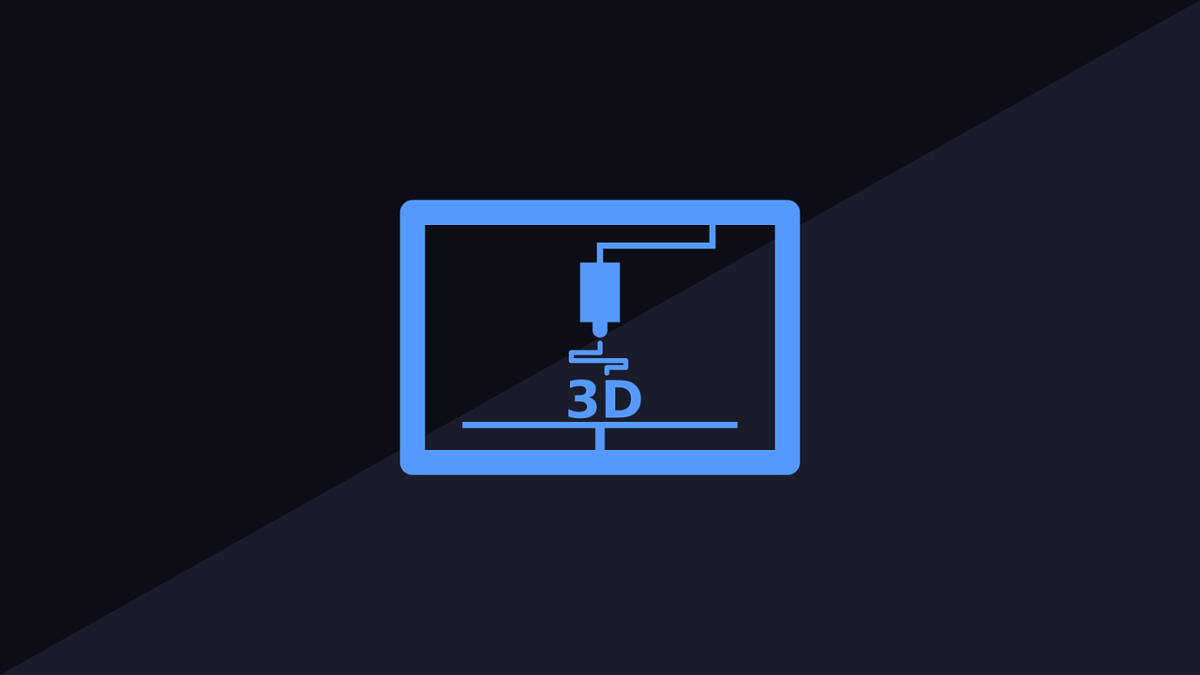★ An Introduction to 3D Printing | A Glimpse Into The Future? ★
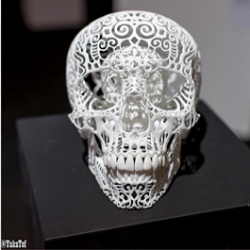
So Is This New Manufacturing Method Really a Big Deal?
Well I certainly think it is a big deal! Not only may 3D printing break down barriers between regular people with design ideas and turning those ideas into reality, but a new level of intricacy can be achieved that can't be achieved with any other manufacturing process.
Pretty impressive stuff is already being produced on (relatively) affordable machines, and the technology is only in it's infancy...so imagine what could be being made in just a few short years. And not only by big businesses either, but by individuals in the comfort of their own homes!
I for one am very excited about the prospects, even if just in a low-level capacity making home crafts. Will it change the world? I hope so.
Introduction
Design technology was always my favorite subject at school, and I've always had a great interest in crafts, art and design. So as you might imagine, the possibilities of 3D printing fill me with intrigue. Being able to 'print' a 3D object of your own design would be fantastically useful for many craft projects, and that's just a tiny area where this type of printing could be utilized.
The concept has been around for a while - decades in fact - but it's only recently gained widespread media attention due to various companies having tried it out in their product manufacture; for instance Dita Von Teese has posed with a dress made with 3D printing. There is a growing interest too due to the fact that 'ordinary' people can now buy 3D printers for their homes, plus many new businesses have started up based solely on the use of this technology.
The concept encourages lots of interesting ideas for what could, in a few years, be a common occurrence, and I find it fascinating. I really believe the printing of objects at home will become more and more widespread in the future and it really is one of the most exciting innovations to appear in my 20-something years on the planet (after the invention of computers/the internet of course!)
With regards to how they work, 3D printers use an 'additive manufacturing' process which means that the shape is built up layer by layer from scratch. Most other manufacturing processes aren't this type, but are instead 'subtractive manufacturing' which means that the shape is created by starting with a block of material and removing the excess to leave just the material you want left. e.g. carving wood on a lathe, or drilling a hole in an object. 3D printing is therefore a much less wasteful type of manufacturing, which is a great bonus.
There are a couple of 3D printer types that seem to be the most popular:
- Printers that use 'fused deposition modeling' (FDM): This is the type you will see most often in those intended for home use. These printers mainly make objects from plastic. They work by melting plastic filament and extruding it out of a cartridge. The printers basically build an object up in layers by following a design (that you will have created, or bought from someone else). The plastic is deposited in the desired pattern on each layer, moving up very slightly after every layer to create the 3D shape. It can be time consuming because the layers are extremely thin, but this allows great detail to be produced. The plastic sets very quickly so it won't flow when the layer is formed. The best way of visualizing how it works is to look at a video showing a printer in use (see below).
This type of printing has some design limitations though; you can't have any elements suspended in mid-air or have very thin sections because there is no support material in between the design elements.
- Printers that use 'selective laser sintering' (SLS): More expensive than FDM but is the most popular type of printing for business use. This process differs to that described above in that the layers aren't built up into free air, but instead very fine layers of powder are laid down, one on top of the other, whilst a laser fuses the powder together in each layer according to the design. When the printing is finished, you can remove the excess powder and be left with the design you want - made from laser-fused powder.
The excess powder acts as a support, so more complicated and intricate designs can be achieved with this process, and plastic, metal, glass or ceramic powder can be used. After the fused shape is removed from the excess powder it may need to be fired (depending on the material) to add strength.
In addition to these 2 types, there are various other types of printer available such as '3DP' printers which use a plaster powder and a glue binder, and can in fact print in full-color.
The type of printer you use depends mostly on what material you wish to print in, and also on what you can afford.
See 3D Printers At Work - And Listen to a Succinct Introduction to the World of 3D Printing
A Selection of Desktop Printers - So You Can Experiment for Yourself
There are already a number of small home printers you can buy if you have the cash - and although they can be used to make fun little designs, the main draw is the novelty of the tech, and the fun of experimenting with this new process:
Materials
The most-used material in 3D printing seems to be plastic (either ABS or PLA), but there are many other material options including nylon, ceramic, brass, sterling silver, gold, bronze and even chocolate.
One more material that can be printed is sugar; can you imagine if a pastry chef gets a-hold of a sugar-printer, or even a chocolate printer?! The sugarwork and candy you could produce would be so unbelievably intricate that desserts and other sweet things would be taken to the next level of presentation. And that's quite a realistic expectation of the future use of the printers too I reckon. Sounds fun to me!
This food-printing idea sets the cogs in my brain whirring...picturing people years from now programming what food they would like into the printer and having it built up right there in front of them. Now wouldn't that be kind of cool? (Although I do enjoy cooking so wouldn't give that up completely anyway :))
Printed Plastic Robots
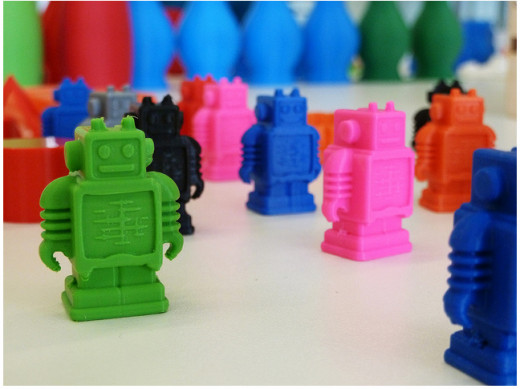
Interesting Articles to Read
Here is a list of the most interesting articles I've found on this subject, so I hope you enjoy them:
- 3D Printing & The Future of Stuff
A comprehensive article offering the low-down on this new tech. - Printing a Ford Mustang in Chocolate
With a video showing the building of the miniature car in candy. - The Future Potential
And thoughts about when the printer will become affordable. - Adventures in 3D Printing
A funny article from a printing beginner. - Healthcare Possibilities
Including making kidneys and hip replacements. - A Brief History
What has been achieved up to 2012. - 20 Amazing Things That Can Be Printed
Including a camera lens, loom and even a gun. - Next Industrial Revolution?
Discussing if this technology will be a success or a flop.
Filigree Skull

On a recent visit to the Weta workshop in Wellington, New Zealand (where models and props were made for the Lord of the Rings movies), the subject of 3D printing was raised, and they told us they were looking into using it to make large objects - large as in the size of a car!
The finish on 3D printings is too rough at the moment for them to make small, intricate and accurate objects though; lots of man hours would be required to finish the surfaces to an acceptable standard. Exciting prospects
The Future & Possibilities
Although the process is not yet perfect, and it looks like we're still quite a way away from people having mini factories set up at home, the technology will continue to be improved and the range of possibilities will expand and expand. Already some awesome products have been 3D printed, which shows the potential, but once the potential is realized it will be very exciting and I think it will change the world of manufacturing forever.
Some advantages of the technology, and some ideas for 3D printing uses in the future, include:
* Faxing - you could send 3D messages or design ideas (fantastic for design firms dealing with international clients or clients far away), or could send prototype replicas.
* Buying the designs of different products to print at home - no transport costs or wasted packaging so you'd save money, and it would be convenient to just have a product appear in your home. Plus you'd only have to wait for the printer, not for delivery, so you would receive your order much quicker. Shopping would become a completely different experience.
* Replicating lost items, your favorite existing items or improving on current designs you own.
* Inventing your own product - you don't have to have a large capital investment to get your idea manufactured so it will be so much easier for a design to go from your brain to reality! Excellent potential for creative people everywhere.
* Printing personalized products and totally custom-fitted items like clothes, dental appliances or prosthetics, would be far easier.
* Manufacturing medical equipment, models and even body parts, meaning the technology could one day save, or at least improve, a lot of lives.
With regards to changing the world, if people start printing a lot of objects at home, there will be many people earning a living just designing for 3D printers whilst many physical shops will no doubt close down, or will have to adapt very quickly. Mass manufacturing will likely decrease, and individuality will be easier to achieve in every aspect of life. Perhaps traditional craft techniques will die out (I personally fight against that!), or maybe ...none of these things will happen. Who knows? But I can't wait to find out :)
Modern Cat Sculptures
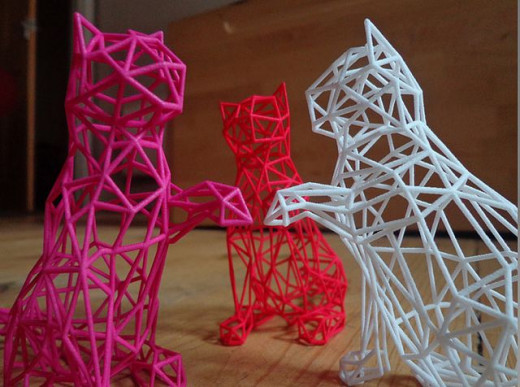
3D Printer in Action
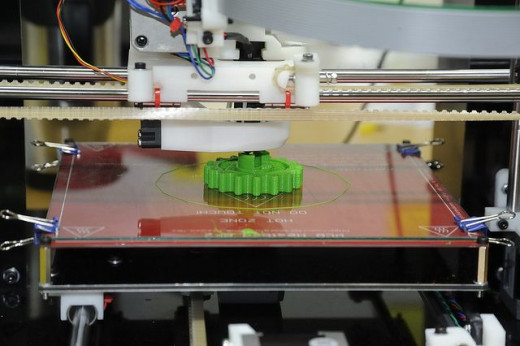
This printer is a self-build project, and in the photo it is building up a (green) cog layer by layer. If you look at the green surface you can see the lines where each layer has been added. Obviously this will require finishing after printing in order to create a smooth surface.
Photo by Glyn Smith.






